Order handling is the heart of eCommerce fulfillment. ECommerce companies need an order handling process that’s efficient, cost-effective, fast, and accurate. To achieve that, you first need to understand the fulfillment process, then pick the right partners and tools.

The following guide to order handling includes the elements of the order fulfillment process that you’ll need to manage to grow and scale your online business.
What is order handling?
Order handling is preparing and shipping an order to a customer. The process usually begins when a customer places an order online and ends when the order is delivered to the recipient’s address.
The order handling process includes many management choices that can affect the health of your eCommerce business. The order processing element of your supply chain impacts customer satisfaction and retention, order lead time, and inventory management, among others. In addition, managing costs within the order handling process can improve your profit margins.
Steps in the order fulfillment process
Orders pass through many hands in the fulfillment process. Here’s a step-by-step breakdown.
A customer places an order
The order handling process begins when your customer clicks the “Buy” button to submit an order. There are three basic types of customer orders:
- Order for immediate fulfillment: The item is in stock, and your warehouse can fill the order right away.
- Pre-order: The product has a future release date, and you’re accepting pre-orders. Crowdfunding is a common strategy for pre-ordering, but more traditional retailers may also use pre-ordering. Pre-ordering ahead of manufacturing ensures that you have a market for the merchandise you produce. However, most customers want items delivered sooner than the long lead time on many pre-orders.
- Backorders: If you have unusually high demand or stock is delayed due to supply chain disruptions, you might have to put a product on backorder. Instead of processing the order immediately, your warehouse will ship backorders when the item is back in stock. Allowing backorders, rather than simply marking an item as out of stock, can salvage sales that you might lose otherwise. If you experience frequent stockouts, consider raising your safety stock levels to compensate for slowdowns in supply.
Some customer orders are a mixture of two or more types of items. For example, someone might order a sweater in three different colors. The blue and green are in stock and can ship right away, but the red sweater is backordered. Your warehouse will pack and ship the blue and green sweaters as soon as the order comes in, and the red sweater will ship separately when that item is back in stock.

The fulfillment center receives the order information
Once the customer places an order, it goes to the fulfillment center for processing. While some online sellers transmit order details to the warehouse via email or other manual methods, most companies send orders directly via API. Even if you outsource your fulfillment to a third-party logistics provider, your orders should flow directly and instantly to the fulfillment company.
A picker pulls items to fill the order
The next step is order picking. Pickers are warehouse workers who pull items to fill orders. There are many picking methods, and each warehouse designs its layout to maximize picking efficiency. Pickers usually pull products for multiple orders at once (batch picking) to speed the process.
At Red Stag Fulfillment, the picker places all the items for each order in its own coded bin. We have created order handling systems that check and re-check orders throughout the process to improve order accuracy.

A packer boxes the order
The picker delivers orders to a packing station. The packer checks the packing slip to ensure all the items for the order are included, then packs and labels the items for shipping. The packing process is a final opportunity to ensure accurate order fulfillment. Red Stag Fulfillment uses quality controls at every step to achieve some of the lowest error rates in the industry.

The box is handed off to a carrier
After the packing station, orders go to a shipping station, usually next to an outbound dock in the warehouse. Most fulfillment warehouses have one or more daily scheduled pickups from FedEx, UPS, and USPS.

The carrier delivers the order
The next step in the order handling journey could be a trip across town in a small delivery van or a cross-country journey that includes stops at multiple transit hubs and shifting among various transport modes. You can reduce delivery times by using centrally located order processing warehouses to reach consumers more quickly.
Bonus step: Follow up to determine customer satisfaction
Order handling isn’t complete once the box reaches the customer. An eCommerce best practice is to follow up after an order to ensure that the customer is satisfied. Follow-up is an excellent opportunity to ask for a positive review or answer any questions the buyer might have. The extra step may even reduce your return rate.
Strategies for eCommerce order processing
Choosing the optimal strategy for order processing is vital. The best plan for you will depend on the size and business model of your company, and you might shift to a different order handling method as your brand grows.
Self-fulfillment
Many online sellers, particularly entrepreneurs who are bootstrapping their businesses, start by packing and shipping their orders in-house. As your business grows, you might rent warehouse space and hire one or more employees to process orders. In self-fulfillment, you’re responsible for paying for the warehouse space, providing security, managing staff, and maintaining warehouse management software. Fulfilling your orders gives you more control but also more to manage.
Dropshipping
In the dropshipping eCommerce model, you don’t warehouse products or even own them. Instead, the manufacturer warehouses inventory and takes care of order handling. You place items for sale online and, when your customer makes a purchase, you buy the item from the drop shipper and it sends the order directly to the customer. You have few upfront costs and don’t have to worry about inventory forecasting.
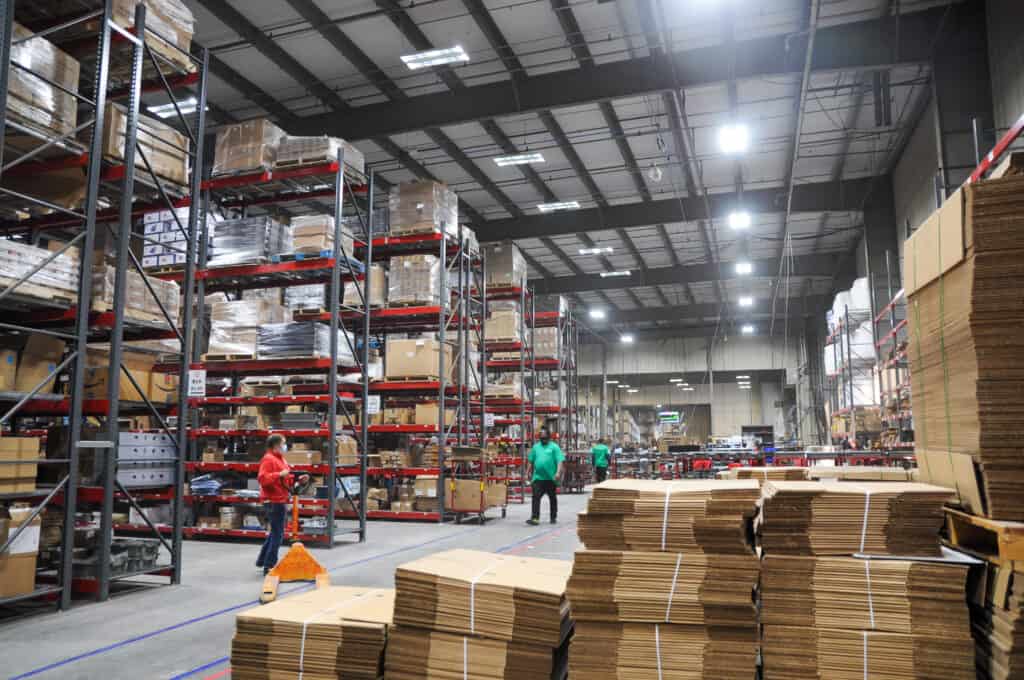
Third-party fulfillment
A 3PL is a company that specializes in order handling for eCommerce companies. A typical fulfillment warehouse will store and ship products for many different brands. When you outsource your fulfillment to a 3PL, you get several benefits:
- Fulfillment professionals prep your orders, but you don’t have to hire, train, or manage staff.
- The storage space you pay for can flex seasonally or as consumer demand changes. You aren’t tied into a warehouse lease.
- Instead of working out of a warehouse near your headquarters, you can choose fulfillment locations that can reach your customers without traveling through as many shipping zones. That will save you time and money on shipping.
However, not all 3PLs are created alike. Some are merely management companies that subcontract fulfillment services to warehouses they don’t own or manage, so the quality of their order handling services may be inconsistent. When choosing a 3PL, ask if the company runs its fulfillment centers.
Fulfillment by Amazon
Technically, Amazon FBA is a type of third-party fulfillment. However, it’s such a widely used order handling option that it deserves a special mention.
Amazon operates more than 100 fulfillment centers across the U.S. Sellers who use FBA can qualify their products for Prime shipping, and they get the advantage of one of the most advanced logistics operations in the world. For many, that makes FBA a logical choice for order processing.
However, Amazon FBA has many downsides. When FBA handles your fulfillment, you have less control over order processing, and your orders will be shipped in Amazon-branded boxes. In addition, because of the high demand for warehouse space, Amazon may limit the amount of stock you can store in FBA warehouses if your products don’t have a high enough turnover rate. If you sell on Amazon, consider an FBA alternative instead of Fulfillment by Amazon, or use independent 3PL services to supplement FBA.
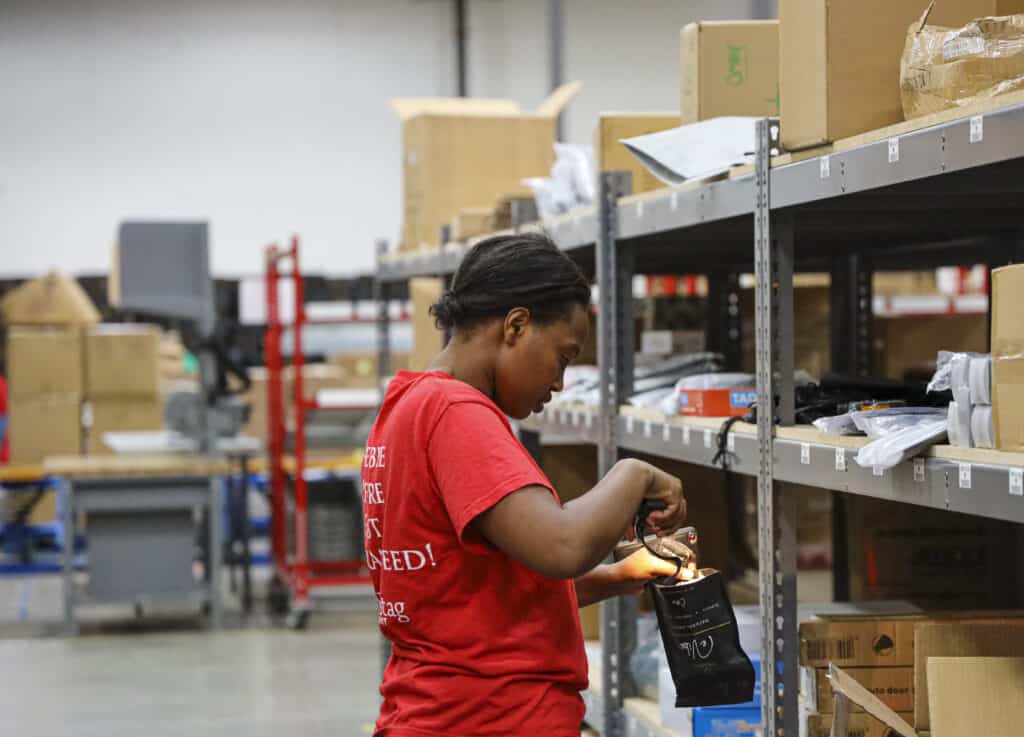
What is the order management process for eCommerce?
While you can increase your business resources by teaming up with a 3PL, you’ll want to stay in charge of your fulfillment. Here are some of the essential elements of the order management process for eCommerce.
Supply chain management
Your order handling won’t run well if your supply chain isn’t functioning smoothly. Connect your fulfillment operations with manufacturing and transport so all elements of your supply chain can work together. Supply chain visibility is a great way to find operational efficiencies and take advantage of the resources your suppliers can offer.
Inventory management
Inventory planning is more vital than ever as supply chain disruptions continue. Your inventory plan should include reorder and safety stock levels, plus redundant supply resources to keep your online store stocked with as few interruptions as possible.
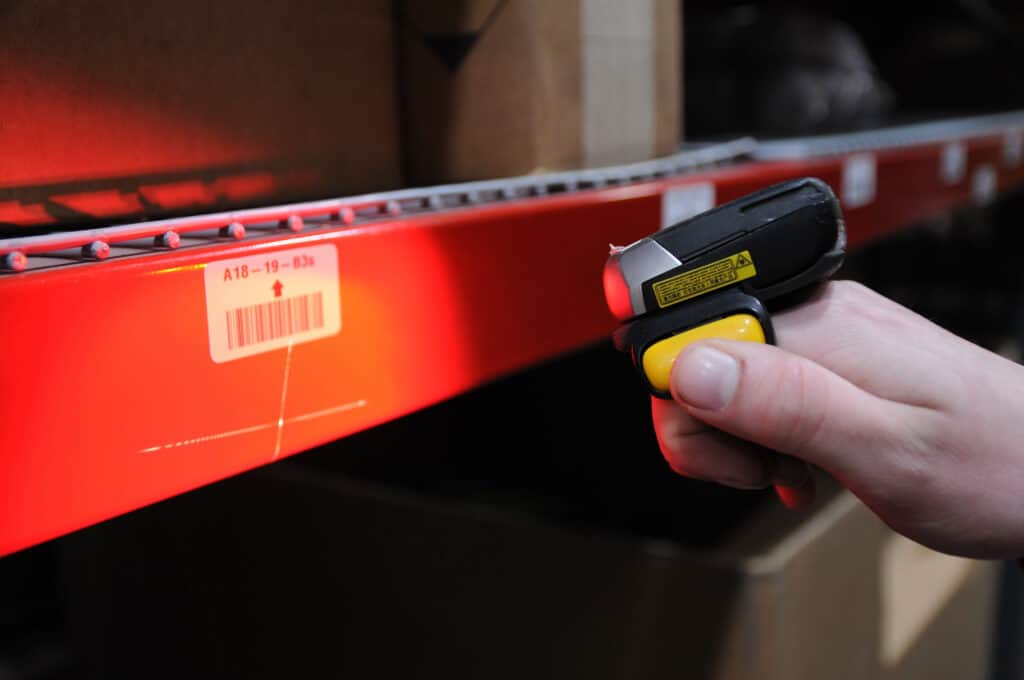
Delivery systems
To manage your delivery, you might sign a contract with one shipping company to get the most significant discounts. Or you can ship with the best carrier for each package, a flexible carrier selection option that Red Stag Fulfillment offers its clients.
Reverse logistics management
You can’t escape eCommerce returns, but you can manage your reverse logistics to minimize costs and increase customer happiness. Start by developing a return policy that works for your business and customer base.
Software to build your order management system
Fortunately, there is a huge selection of software to help you with order management. Inventory management software will help you analyze and predict trends to better control your stock levels. Other order fulfillment software can help you automate everything from generating pick lists to tracking inventory flow through your fulfillment warehouse to retargeting shoppers to increase conversions.
Shipping options in eCommerce order handling
One of the most crucial order handling choices is your shipping options. Shipping is a considerable fulfillment cost and, whether you offer free shipping or add the cost at checkout, keeping shipping costs low and providing appealing delivery options is essential.

Free shipping
Consumers love free shipping. Of course, free shipping isn’t truly free since you’ll need to fold the cost into your retail pricing. However, if you can offer free shipping even on a limited basis, it will win you sales.
Expedited shipping
Including expedited shipping choices at checkout helps shoppers who need an order quickly. Consumers generally understand that they will have to pay a premium price for faster delivery.
International shipping
Offering international shipping options opens your eCommerce store to the world. See if your 3PL can help you find an international delivery service.
Oversized shipping
There is almost nothing too big to sell online: You can deliver bikes, musical instruments, and even cars directly to consumers. However, oversized products do need special handling. Lightweight and oversized items (such as a bicycle helmet or badminton racquet) may incur dimensional weight charges, making shipping pricey.
And not every fulfillment warehouse is designed to process oversized products. At Red Stag Fulfillment, we specialize in bulky, fragile, and oversized merchandise. We set up our warehouses with extra wide aisles and heavy-duty package conveyors, so we’re ready to handle orders for products of any size.

LTL and FTL freight
Full truckload (FTL) freight is most often used to move wholesale product containers to fulfillment warehouses or distribution centers. Less than truckload (LTL) could mean shipping a single item or several bundles of palletized merchandise. LTL freight can be a more economical way to deliver orders for large items such as furniture. You can also use palletized shipping to deliver bulk purchases (such as an order of textbooks for a whole school) or wholesale orders.
How Red Stag Fulfillment helps eCommerce businesses improve order handling
Red Stag Fulfillment staffs its warehouses with dedicated order handling professionals and creates sophisticated order management systems to provide the best fulfillment services for our clients. Here are just a few of the ways we go above and beyond for fantastic eCommerce fulfillment.
Same-day fulfillment
If an order comes in and sits in a queue waiting to be processed, it’s not getting to your customer. Red Stag Fulfillment offers two levels of same-day order fulfillment, with cutoffs at 3:00 p.m. and 5:00 p.m. Eastern Time. When you can ship an order the same day the customer places it, you reduce your order lead time and increase customer satisfaction.
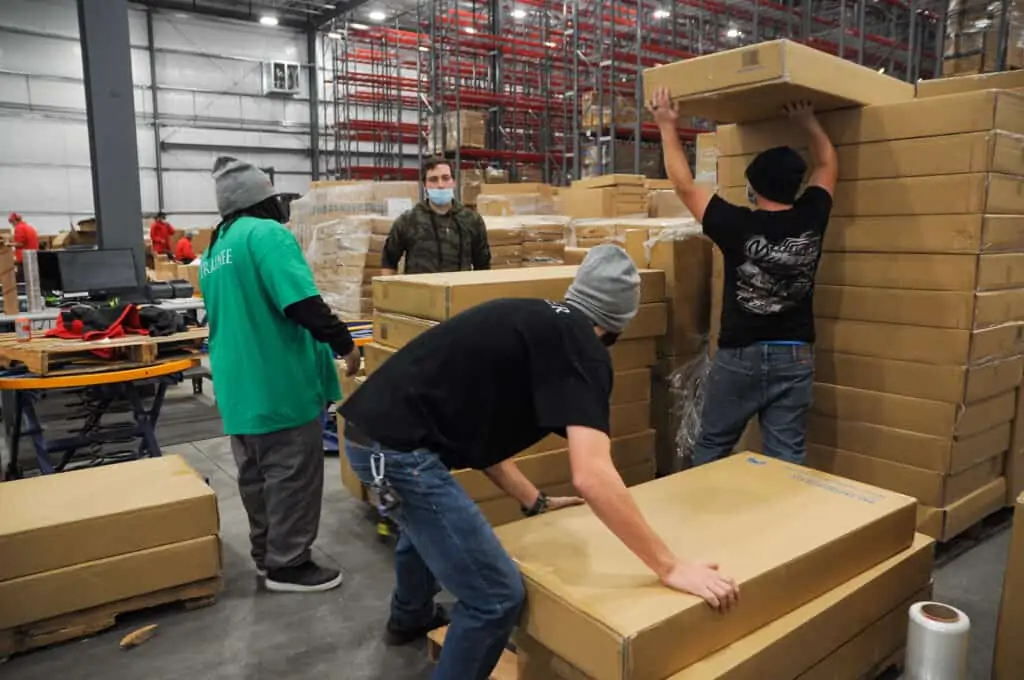
Fast turnaround on backorders
With cross-docking, Red Stag Fulfillment can turn around a whole container of backordered products in a day. Our cross-docking process allows us to add shipping labels to backordered products right on the loading dock and then move those boxes directly to the shipping bay without placing them on the shelves.
National fulfillment locations
From its warehouses in Knoxville, TN, and Salt Lake City, UT, Red Stag Fulfillment is well-positioned for national fulfillment. Our Knoxville location serves as our East Coast fulfillment center, and our Salt Lake City hub serves the West Coast. Both fulfillment hubs can also ship to the interior U.S., allowing us to reach 96% of U.S. addresses in two days or less.
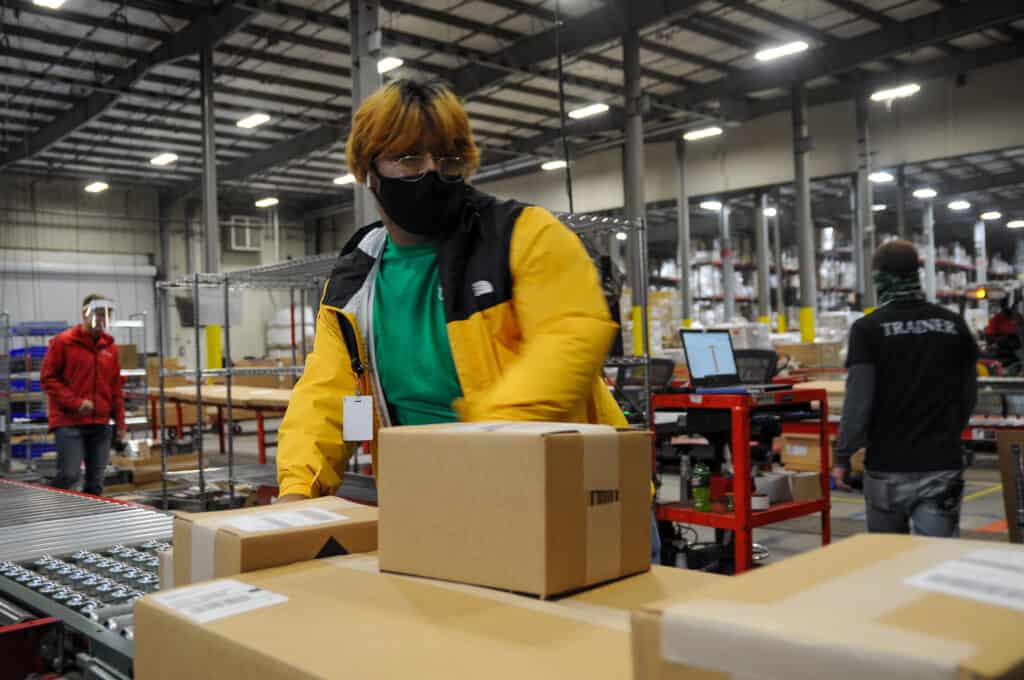
Accuracy guarantees
Providing the best fulfillment services is so crucial to us that, if we make a mistake, we not only fix the problem, but we also pay you $50. Our accuracy guarantees include:
- Mis-picks
- Mis-packs
- Shipping to the wrong address
- Failing to move stock from the receiving dock into inventory within two business days
We can offer those guarantees because we have one of the best accuracy rates in the industry.
Zero shrinkage
Shrinkage is an inventory management headache that many fulfillment companies view as an unavoidable part of order handling. But at Red Stag Fulfillment, we think we should be better than that. Our staff is made up of professionals, and we expect them to treat your inventory with the same care as if it were theirs. That’s why we promise zero shrinkage for items in our warehouses. If any of your stock is lost or damaged, we will pay the wholesale cost to replace it.

Fast customer service
When you work with Red Stag Fulfillment, you get a personal customer service representative who knows your business. If you have a problem or question, you won’t talk to someone at a call center halfway across the globe who has no authority to solve your problem. You’ll contact a customer rep you know by name, and they can walk right onto the warehouse floor to get you the information you need. We respond quickly and work fast to resolve your issues so your fulfillment flows smoothly.
Improving the quality of your order handling is an investment in your business that will help it thrive. If you’re ready for top-quality eCommerce fulfillment, it’s time to talk to Red Stag Fulfillment.
More about order handling:
- How do you pick reliable fulfillment solutions?
- Global Fulfillment Services: An ECommerce Guide
- Choosing Your Fulfillment Warehouse Locations








